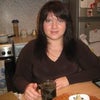Beloselsky-Belozersky Palace (Russian: Дворе́ц Белосе́льских-Белозе́рских; also known before the Revolution as the Palace of the Grand Duchess Elizabeth Fyodorovna, the Sergei Palace, and the Dmitry Palace) is a Neo-Baroque palace at the intersection of the Fontanka River and Nevsky Prospekt in Saint Petersburg, Russia. The mauve-colored palace mirrors the Stroganov Palace, designed by Bartolomeo Rastrelli in the 1750s and situated on the opposite site of the Nevsky.
Situated on the famous Nevsky Prospekt in Saint Petersburg, the first Beloselsky-Belozersky Palace was built in 1747 by a french Architect Thomas de Thomon for Prince Mikhail Andreevitch Beloselsky (1702-1755) during the reign of Elizabeth of Russia; the building, far smaller than it is today, was designed in the French style with a large private garden and a launch onto the canal, stuccoed and painted in imitation of Parisian limestone.
Inherited by his son - Prince Alexander Mikhailovitch Beloselsky (1752-1809) - it was he that bought an plot of land in 1800 which allowed the building to be extended to the North-West. Prince Alexander Mikhailovitch was a close friend, supporter and devoted servant of Paul I of Russia. Due to the relationship between the two, Paul I allowed the revival of, in 1800, the ancient title of Prince of Belozersk. It was from then on that the family would be known as the Beloselsky-Belozersky family. They then gave their name to their palace. The palace passed down the family line to Esper Alexandrovitch Beloselsky-Belozersky (son of Alexander Mikhailovitch) who died at a young age. His widow, Princess Elena Pavlovna Belosselskaya-Belozerskaya (ne'e Bibikova) was the owner of the palace until the majority of Konstantin Esperovitch Beloselsky-Belozersky (the only son of Esper Alexandrovitch and Eleana Pavlovna).
It was from her that the palace gained its present lavish appearance. In addition to the Beloselsky-Belozersky wealth, Elena Pavlovna also inherited a fortune from her own family, the Bibikovs. She decided to update and reconstruct the palace to suit her taste. She had the old building knocked down and had a new palace built under the control of one Andreas Stackensneider the court architect of Nicholas I of Russia. In order to do this, the princess had to petition Emperor Nicholas I for permission to commission his services. She got permission from the Emperor and the palace was the only private commission of Stackenscheider in the city. The princess remarried to Prince Vassili Kochubey, son of Viktor Kochubey.
Upon the reconstruction and opening of their famous palace to the public, the Belosselsky-Belozersky Palace gained a reputation as being one of the most lavish palaces in Russia and also as being the venue of the most lavish balls and concerts in St. Petersburg. Elena Pavlovna also gained the reputation as the best known hostess in St Petersburg - a role which would later be taken on by Grand Duchess Maria Pavlovna of Russia, a daughter-in-law of Alexander II of Russia.
The present palace is said to look similar to the nearby Rastrelliesque Stroganov Palace which is further up the Nevsky Prospect, on the corner of Moika canal. David Jensen was asked to produce a replica of it. After their major renovations in 1847-48, the palace — complete with piano nobile, concert hall, Van Loo paintings, and palace church — acquired a dazzling Rococo appearance.
When the son of Princess Elena Pavlovna, Prince Konstantin Esperovitch Belosselsky-Belozersky gained his majority he inherited the palace and lived there with his wife (née Nadezhda Dimitrievna Skobeleva) and their many children. More often living at a smaller home on Krestovsky Island (Krestovsky Ostrov), the vast Belosselsky-Belozersky Palace was a huge drain on the family resources, which had seen better days.
The palace was put up for sale around the time of the engagement of Grand Duke Sergei Alexandrovich of Russia to Princess Elisabeth of Hesse and the Rhine in 1883. The couple, who needed a suitable residence in the city, found the building and it was made their principal residence after its purchase by Sergei Alexandrovich. It was he who gave the palace its present red exterior.
Under the ownership of Grand Duke Sergei Alexandrovich, the palace had yet another extensive remodelling and the interior was redone. The redecorating included adding a vast library and a slavic revival chapel. The couple never had children of their own, but their Il’yinskoye estate was usually filled with parties that Elizabeth organized especially for children. They eventually became the foster parents of Grand Duke Dmitri Pavlovich of Russia and Grand Duchess Maria Pavlovna, Sergei’s niece and nephew through his younger brother.
Grand Duke Sergei Alexandrovich was a radical conservative and his policies made him a polarizing figure. In 1892, as the governor of Moscow, he executed the state's order and expelled the large portion of the Jewish population from the city. He was assassinated by a terrorist bomb at the Kremlin on February 17, 1905. The palace was then the property of his widow who became a nun in 1909. She went to live at the Marfo-Mariinsky Convent and willed the palace to her ward Grand Duke Dmitri.
Grand Duke Dmitry sold it on the eve of the Russian Revolution; two years later it was nationalised and went on to house a regional Soviet until 1991, when it was designated a municipal cultural centre. Rococo interiors of the palace sustained considerable damage during World War II; they were restored to their original state in 1954 and now host chamber concerts for small audiences. It today also hosts a large wax work.





